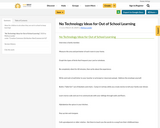
Ideas for children to do when they are not in school to keep learning!
- Subject:
- Arts Education
- English Language Arts
- Math
- Science
- Social Studies
- Material Type:
- Activity/Lab
- Date Added:
- 03/18/2020

Ideas for children to do when they are not in school to keep learning!
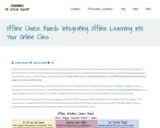
If teachers or parents are looking for ways to engage students in offline learning activities at home, check out this choice board. It is composed of activities that encourage students to think critically and creatively, document their learning, reflect on these unconventional learning experiences, and share what they’ve worked on with their peers.

Free resources, including complete courses, made available by Open University — definitely MOOCish before MOOCs were cool.
Courses for students, parents, teachers and community members alike!

Looking for photos for your digital stories, but worried about copyright and fair use?
Pics4Learning.com has been a resource for copyright-friendly images since 1999. With over 35,000 images, Pics4Learning is a great place to find images that will help you tell your story!
Explore lots of different categories to find just the right image for your project!

Podcasting is a powerful way for students to share their voice with the world. Along the way, they learn to communicate, engage in critical thinking, and go through the design process as they ultimately publish their work to an authentic audience.
This site offers 20 creative ideas for podcasts you can do with your students.
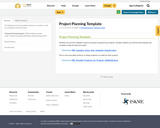
The following is a list of possible products for a project, as well as a template to plan the project.
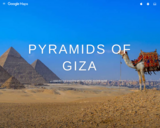
Travel back in time and explore the last standing ancient world wonder through Google Maps Treks. Learn more about the history, location, purpose, materials, and labor required to build the magnificent structures.

ROVER (Recommended Online Video Education Resources) is a video streaming service for Saskatchewan teachers and students in the PreK-12 education system. It is managed and maintained by the Saskatchewan Ministry of Education. ROVER is a video-on-demand service that provides teachers and students with the convenience of immediate access to streamed, educational videos that support curricula. ROVER videos are housed on a server located in a school or school division network so there are no bandwidth issues, resulting in better picture quality and continuous play of videos without pauses. The videos are intended for viewing on the streaming site and not for copying or downloading.
There are approximately 1,500 videos in ROVER’s combined English and French collections that can be accessed by teachers and students to enhance learning in the classroom.
If you are unable to access the site, it may be because a Saskatchewan Ministry of Education Blackboard login is required. All students have an Edonline account, so contact your child's school or the Ministry of Education’s Support Desk at 1-866-933-8333 or email at stans@gov.sk.ca for login information. Your child's student number will be required.

The Reid Park Zoo site offers webcam experiences with a variety of animals, plus lots of information for that animal lover in your midst!
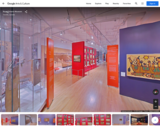
This website takes you to the Royal Ontario Museum, literally. Google Streetview takes you directly inside the museum itself, allowing you to wander through several exhibits as if you were physically there. Wander through the spacious entrance of the museum past dinosaur skeletons, peek into the Sigmund Samuel Gallery of Canada and stroll through the Canada: First Peoples exhibit.
Be sure to click on the "Home" and "Explore" tabs at the top of the page to discover even more great learning opportunities on a wide range of topics.
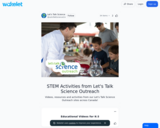
This site offers videos, resources and activities from our Let's Talk Science Outreach sites across Canada!
Choose from Educational Videos, Resources and Activities for K-3, 4-6, 7-12.

STEM MINDS™ curates, creates and delivers the best STEM (Science, Technology, Engineering, Math) programs to children, specific to their needs. “A” for Art is embedded in everything we do as creativity is the foundation for learning!
Use the menu to navigate to the STEM Hub to find plenty of great coding activities. (http://stemminds.com/steamhub/steam-hub-courses-3/)
You will need to register for a free account to access materials.
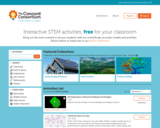
This site offers a collection of hundreds of free K-12 STEM resources, from standalone models and simulations to short activities and week long sequences of curriculum materials. Filter by type of subject, activity type and grade. Searchable subjects include: physics and chemistry, life science, engineering, earth and space, and math.

"A one-stop-shop for educators working to increase students’ financial literacy skills. This program is built by teachers to provide resources and activities that connect directly to 42 modules in Saskatchewan’s Financial Literacy 20, 30 curriculum. Free middle years and secondary level content can be accessed on the site, and educators can inquire about professional development opportunities."

Science Bob is a fun, interactive site that has several different areas for kids to choose from.
There are videos, experiments, science fair ideas and a research help link with many fantastic links to other sites.
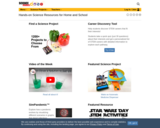
Hands-on Science Resources for Home and School
The award-winning, non-profit Science Buddies empowers K-12 students, parents, and teachers to quickly and easily find free project ideas and help in all areas of science from physics to food science and music to microbiology. Whether your goal is to find a fun science activity for your kids or win the international science fair, sciencebuddies.org puts comprehensive, scientist-authored tools, tips, and techniques at your fingertips.

"The Science of Happiness is a free online course that explores the roots of a happy and meaningful life. Students engage with some of the most provocative and practical lessons from this science, discovering how cutting-edge research can be applied to their own lives.
Since it first launched in September of 2014, The Science of Happiness has been hugely popular: It is one of the top 10 courses on the edX platform, where it is hosted; more than 500,000 students have registered for it so far; and students who complete the course report significant increases in their happiness and decreases in their levels of stress and loneliness."
You will have to register to take this free online course!

Although the vast majority of our children will not grow up to become science professionals, they are growing up in a world that requires scientific literacy and critical thinking skills. Technology will play a role in their lives that is unprecedented for previous generations. They will have to find solutions to climate change, unfamiliar diseases, animal extinction, overpopulation and possibly food shortages. It is crucial that we work together to help them be successful in this world.
Being a scientist is about asking questions and being curious, exploring and experimenting, figuring out how things work in the world – all things that children are naturally good at.
This site offers activities that will encourage children to follow their own natural curiosity, investigate, explore and discover. In science, there are no mistakes, only discoveries!

ScratchJr is an app that is available through Apple (https://apps.apple.com/us/app/id895485086?ign-mpt=uo%3D4) or Google Play (https://play.google.com/store/apps/details?id=org.scratchjr.android).
With ScratchJr, young children (ages 5-7) learn important new skills as they program their own interactive stories and games.
By snapping together graphical programming blocks, children can make characters move, jump, dance, and sing. In the process, children learn to solve problems, design projects, and express themselves creatively on the computer. They also use math and language in a meaningful and motivating context, supporting the development of early-childhood numeracy and literacy. With ScratchJr, children don’t just learn to code, they code to learn.

Seek by iNaturalist is an iOS/Android app that helps its users identify plants, animals, and fungi in their local area. Kids can see what species have been previously observed nearby, and can also photograph specimens themselves, either directly in the app or by pulling in photos from their device's photo roll. The app will then use its image recognition technology, based on the iNaturalist library of images, to match the observed plant, animal, or fungi to a database. If there's a match, a kid's find is placed in his or her collection, but it must be an exact match; when the app can't narrow it down to an exact species, it isn't added. As kids collect more and more species, they earn badges inside the app.
Once kids have made a match, or if they're perusing the lists of species that have been previously observed near them, the app shows facts about the species, including how many have been observed, the best time of year to spot the species, a map of where it has been seen, the scientific name, other photos of it, and a general description. Also, kids' own photographed sightings end up in the collection of local images, but it all remains anonymous. There's no registration required (or even available), and no user data is collected.